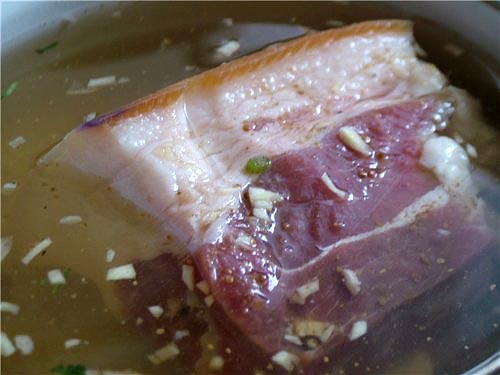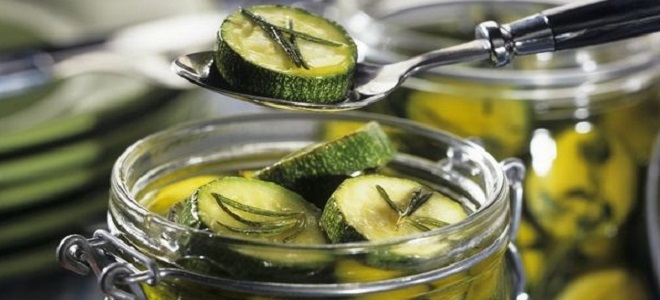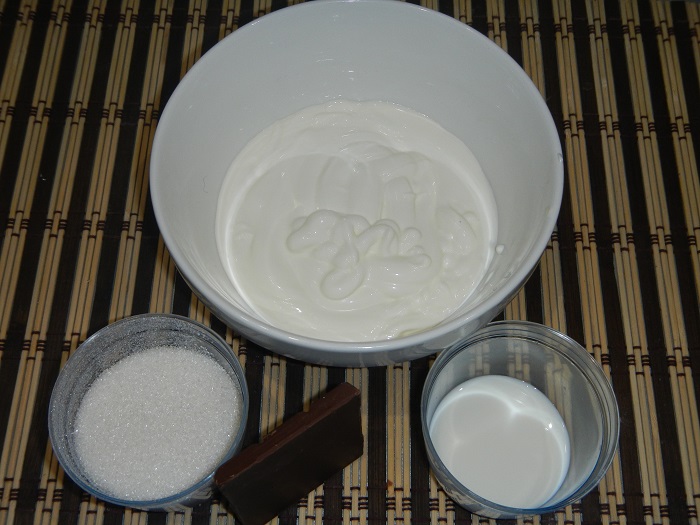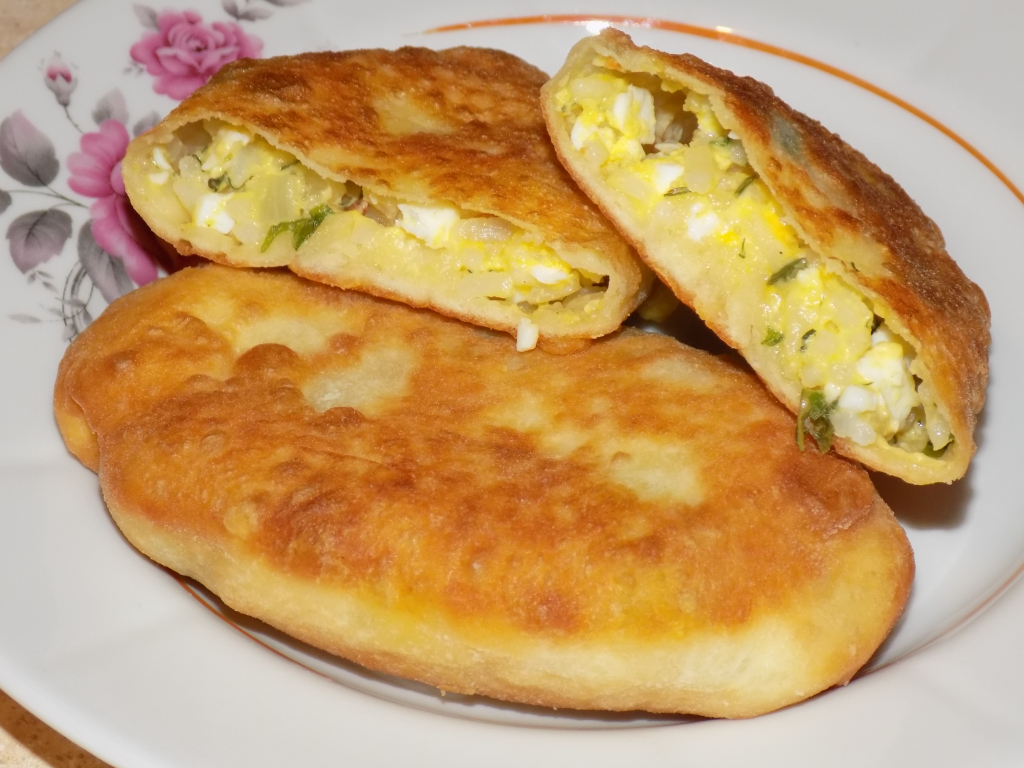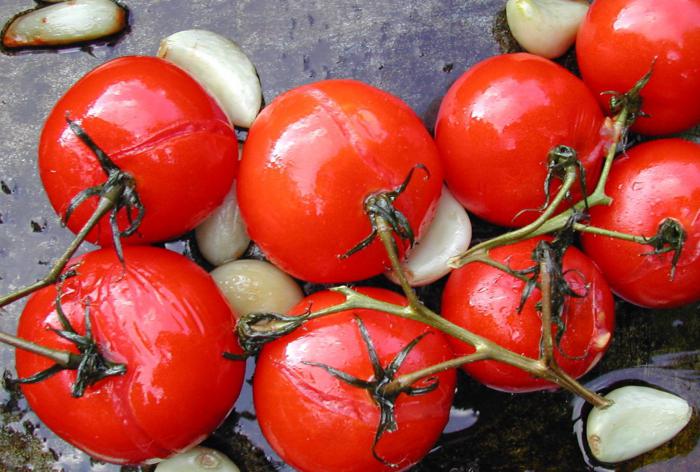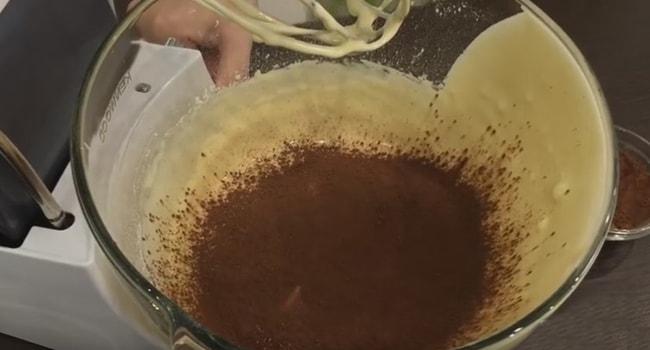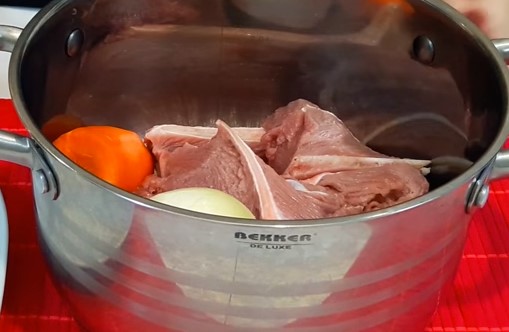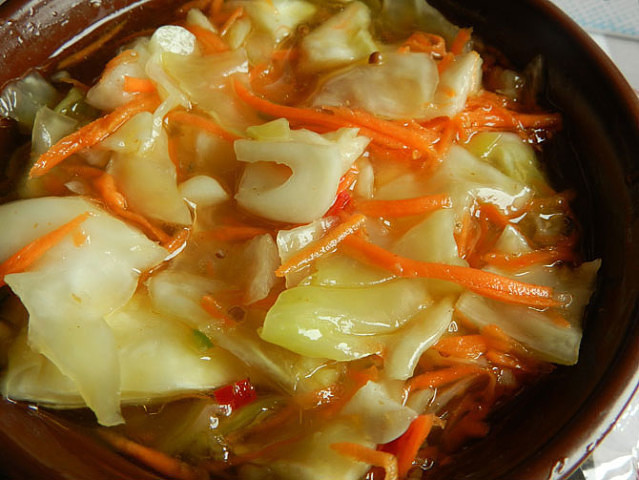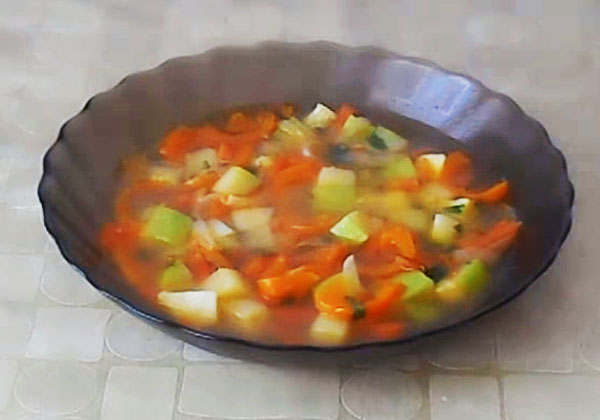Marzipan: the composition of what they make and how to cook. “What is marzipan? - Gourmet dessert and sweet medicine, step by step recipe ”
Sometimes called marzipan is also a mass of other nuts, as well as products with it. For example, marzipan buns with peanuts are common in Russia.
Story
It is not known exactly where marzipan was first prepared. A number of European countries - France, Germany, Italy, Estonia, Hungary - claim the title of the motherland of the product. As far back as the 19th century, the Lübeck and Konigsberg marzipan enjoyed great success in Europe.
According to one legend, the reason for the invention of marzipan was hunger, when the only raw material for bread was almonds. It is sometimes said that marzipan was invented as a cure for mental disorders, as it has a beneficial effect on the nervous system.
Marzipan in the cuisine of the peoples of the world
Marzipan is also used in the form of:
- sweets glazed with chocolate or sugar glaze (mozartkugel)
- figurines of fruit or other figurines, without glaze, but with dye
- in its pure form ("marzipan bread" or marzipan cookies, for example, Frankfurt Christmas betmenchen)
- marzipan liqueur
- cake decorations (often low in bitter almonds)
- toppings for cakes and other confectionery
Marzipan recipe
The main ingredients of marzipan:
- sweet almonds
- bitter almonds
Bitter almonds are sometimes replaced by essence, almond liquor, bitter almond oil, or are generally excluded from the recipe. In the latter case, marzipan mass can be used for decoration, but it does not have a specific “marzipan” taste.
Sugar may be contained in the form of powder or syrup, or may be substituted with another sweetener.
The proportions of the main ingredients are usually the trade secret of the confectionery industry.
Additional ingredients:
- flavors (cocoa, liquors, orange peel, rose water, spices, etc.)
- dyes (natural or artificial)
Basic cooking methods:
- cold on the egg
- cold without eggs
- hot


Cold method
The cold method of making marzipan is based on grinding the ingredients and mixing them. In this case, powdered sugar is taken.
As a rule, the oil content in almonds is such that the mass has a plasticine consistency and is easy to sculpt. If there is not enough oil in the almonds, then these almond kernels are of low quality. In the absence of high-quality almonds or for the manufacture of surrogates (apricot kernel kernels - see persipan), recipes recommend adding an egg to the mass. Keep in mind that adding raw eggs is dangerous due to salmonella and significantly reduces the shelf life of the product.
Hot method
A hot method of making marzipan involves the use of sugar syrup. Thick sugar syrup is added to the pre-ground remaining ingredients (nut mixture).
In order for marzipan to keep its shape well, it must be thoroughly kneaded, like dough.
Museums of Marzipan
- Museums of Marzipan in Eger, Hungary
- Marzipan Museum in Szentendre, Hungary
- Marzipan Museum in Tallinn, Estonia
- Marzipan Museum in Lubeck, Germany
- Marzipan Museum in Kfar Tavor, Israel
- Keszthely Marzipan Museum, Hungary
- Marzipan Museum in Budapest, Hungary
The largest manufacturers
- "Niederegger", Lubeck, Germany. The company also founded the Marzipan Museum in Lübeck.
- "George Lemke & Co", Berlin, Germany.
- Grondard, St. Petersburg, Russia. Marzipan factory in Russia.
- "Pomatti", Kaliningrad, Russia. A rich history souvenir marzipan, Konigsberg marzipan. pomatti.com
Write a review on Marzipan
References
Excerpt from Marzipan
“Not to take prisoners,” continued Prince Andrei. “That alone would change the whole war and make it less violent.” And then we played war - that’s bad, we are magnanimous and the like. This generosity and sensitivity - like the generosity and sensitivity of a lady, with which she makes nausea when she sees a calf being killed; she’s so kind that she can’t see the blood, but she eats this calf with sauce with sauce. They talk to us about the rights of war, about chivalry, about parliament, to spare the unfortunate and so on. All nonsense. In 1805, I saw chivalry, parliamentarianism: we were cheated, we cheated. They rob other people's houses, issue false bills, and worst of all, they kill my children, my father and talk about the rules of war and generosity towards enemies. Do not take prisoners, but kill and go to death! Who came to this as I did, by the same suffering ...Prince Andrew, I think that he did not care, take it or not take Moscow as took Smolensk, stopped suddenly in his speech by an unexpected cramp, grabbed him by the throat. He walked silently several times, but tlaza his feverish, and lip trembled when he began to speak again:
- If it were not for velikodushnichanya the war, we would go only when necessary in order to go to certain death, as now. Then there would be war because Paul Ivanovich offended Michael Ivanovich. And if the war is now, since the war. Then the intensity of the troops would not be the one it is now. Then we would all these Westphalians and Hessians, which leads Napoleon would not have followed him to Russia, and we would not go to fight in Austria and Prussia without knowing why. War is not a favor, but the most disgusting thing in life, and we must understand it and do not play war. It should be taken strictly and seriously the terrible necessity. Everything in this: tilt lie, and war as a war, not a toy. And then the war - is a favorite pastime of the idle and careless people ... the most honorable military class. And what war is, what it takes to succeed in the military, some military mores of society? The purpose of the war - murder weapon of war - espionage, treason and encouraging her, ruin people, robbing them or stealing food for the army; deception and lies, called stratagem; customs of the military class - the lack of freedom, that is, discipline, idleness, ignorance, cruelty, debauchery, drunkenness. And despite the fact - this is the upper class, revered by all. All the kings, except the Chinese, wear military uniform, and to the highest kill people, give a great reward ... will go, tomorrow, to kill each other, slaughtered, perekalechat tens of thousands of people, and then will serve as a thanksgiving services for having beaten many Luden (which number more were added), and declare victory, believing that the more beaten people, the more merit. As a god there watching and listening to them! - a thin, squeaky voice shouted Prince Andrew. - Oh, my dear, the last time I was hard to live. I can see that began to understand too much. A good man does not eat from the tree of knowledge of good and evil ... Well, not for long! - he added. - But you're sleeping, and my pen, go to Gorki - suddenly said Prince Andrew.
- Oh, no! - replied Pierre, condole frightened eyes looking at Prince Andrew.
“Go, go: you need to get enough sleep before the battle,” repeated Prince Andrey. He quickly went up to Pierre, hugged him and kissed him. “Goodbye, go,” he shouted. “See you, no ...” and he, hastily turning, left for the barn.
It was already dark, and Pierre could not make out the expression that was on the face of Prince Andrew, whether it was malicious or gentle.
Pierre stood for some time in silence, wondering whether to follow him or go home. “No, he does not need! "Pierre decided on his own," and I know that this is our last date. " He sighed heavily and rode back to Gorki.
Prince Andrew, returning to the barn, lay on the carpet, but could not sleep.
He closed his eyes. Some images were replaced by others. On one, he happily stopped for a long time. He vividly recalled one evening in Petersburg. Natasha with a lively, excited face told him how she got lost in a large forest last summer, going for mushrooms. She incoherently described the wilderness of the forest, and her feelings, and conversations with the beekeeper whom she met, and, interrupting in her story every minute, said: “No, I can’t, I’m not telling you this; no, you don’t understand, ”despite the fact that Prince Andrey reassured her, saying that he understood, and really understood everything that she wanted to say. Natasha was unhappy with her words, - she felt that the passionately poetic sensation that she had that day and which she wanted to turn outward did not go out. “It was such a charm this old man was, and it was so dark in the forest ... and he was so kind ... no, I don’t know how to tell,” she said, blushing and worried. Prince Andrei smiled now with the same joyful smile that he smiled then, looking into her eyes. “I understood her,” thought Prince Andrew. “I not only understood, but this spiritual strength, this sincerity, this spiritual openness, this soul that seemed to bind the body, this soul I loved in it ... so much, so happily loved ...” And suddenly he remembered about how his love ended. “He didn’t need this. He did not see or understand anything. He saw in her a pretty and fresh little girl, with whom he did not deign to associate his fate. And I? And still he is alive and cheerful. ”
The French king Louis XIV, the Prussian princess Louise Charlotte, the German writer Thomas Mann were crazy about him and could have given up a lot for him. And even the Mouse King from the Hoffmann tale, in exchange for marzipan, agreed not to touch the Nutcracker. This delicacy is capable of performing miracles both in a dream inspired by Ole-Lukoy and in reality.
MARZIPAN (German: Marzipan, literally March bread). An elastic paste in the form of a mixture of powdered sugar with grated, powdered almonds. This mixture gives a real, classic marzipan mass with a certain fat composition, so well formed without any gluing additives that it can be used to stamp sweets and small decorative details, as well as manually form different figures and flowers. Such marzipan sweets and decorations can be painted or glazed (sugar, lemon, chocolate icing) or even left without glazing, which is better, since it does not distort the delicate taste of true marzipan.
The history of marzipan dates back to the beginning of the last millennium and is closely related to the history of the spread of almonds. According to legend, they invented marzipan in Italy, in the year of the great crop failure, when the only product that survived either frost or invasion of unknown bugs was almonds. Resourceful Italian people immediately learned how to make almond bread, almond pizza, sweet marzipan and pasta with almond sauce.
And although the French firmly argue that they invented the delicacy, the Sicilians strongly disagree with this - they insist that the product was brought to their island by the Saracens, great lovers of sophisticated Arab sweets.
Separate mention in connection with marzipan deserves Spain, where it was made already in the VIII century. For example, pine nuts are added to marzipan in Toledo, lemon peel is added to Rioja, and in Andalusia it is prepared in the form of tiles filled with candied fruits.
The Dutch, preparing marzipan - an indispensable treat for St. Nicholas Day - crush almonds, mix it with icing sugar, egg white, a drop of lemon juice and liquor, roll out the dough into layers about 3 cm thick, wrap them in foil, and keep them in the refrigerator 2 to 7 days, and then cut.
Since the time of Peter the Great, it is known that marzipan received the widest distribution in Germany and Austria, and its German name just migrated to Russian and European culinary terminology.
In tsarist Russia, this product has been produced for over a hundred years. As a rare and original pastry treat, it was available only to noble and wealthy individuals. He was given to the emperors, and they, in turn, did not miss the chance to surprise overseas guests with various figures of marzipans.
The history of marzipan in Europe dates back more than one century. Until now, it is one of the most original and sophisticated confectionery products, the personification of aristocratic sophistication, delicate taste, prestige and good taste. It can be ordered in all the best European restaurants, and the capitals try to surprise tourists with museums of marzipans, where you can see the most fantastic creations of confectioners: from animal figures to the Parliament building. Marzipan is the most exquisite gift for Christmas and Valentine's Day.
Marzipan has many guises. Firstly, by its nature this mass is extremely plastic and able to take almost any form. Therefore, it makes so good a variety of figures and decorations, valuable in themselves and decorating other confectionery. Secondly, there are as many ways to use almond plasticine as there are applicants for its invention. In Toledo, pine nuts are added to it, candied fruits in Andalusia, sometimes finely chopped raisins are poured into marzipan, and in the Netherlands they mix egg white, a few drops of liquor and lemon juice and freeze in the refrigerator for about a week. The essence of this, of course, does not change. Marzipan with or without glaze, in the form of colored figures or rolled into balls similar to selected potatoes, is fragrant and tender magic
Well, about the benefits, but she is also involved here. Two dozen almonds - the daily norm of vitamin E for the human body. The same vitamin, which is more successful than others, fights stress and protects cells from damage as a strong antioxidant. It would not hurt to go back to history and recall that, according to one version of the appearance of marzipan, it was invented as a medicine.
In one of the oldest pharmacies in Europe on the Town Hall Square in Tallinn, opened at the beginning of the 15th century, it was prescribed for headaches and mental disorders. It was only in the 19th century that a store selling marzipan as a confectionery was opened here. Under Soviet rule, the Stude family company was absorbed by the state-owned Kalev factory, which became the only confectionery enterprise in the USSR that has the tradition of producing true marzipan. A museum was opened here five years ago.
And this is not the only marzipan museum in Europe. So, with special respect for almond paste are in Hungary, where marzipan appeared in the XV century during the reign of King Matthias thanks to Italian pastry chefs who were staying at court. The museum is open in the suburb of Budapest - Szentendre, on one of the winding streets. Among the exhibits here, in addition to the seductive works of confectionery, whole sculptural compositions are exhibited: Queen Maria Theresa with children and household members, the parliament building, Mozart’s violin. And of course, there is a museum in Lubeck.
The fact is that Germany also has its own opinion about marzipan. In Lubeck, during the famine of 1407, all bread was eaten for a long time and bakers switched to almonds. Thus appeared the bread of St. Mark - Marcuspan. It is in Lübeck that the most famous and successful enterprise for the production of marzipans is located - the company Niederegger, the former official supplier of Russian and German imperial houses. Lubeck marzipan is prepared according to a special old recipe, the secret of which was not disclosed. According to one version, its solution lies in the fact that in every hundred ordinary tonsils here is added one bitter. There are 200 different varieties of marzipan in Lubeck: with pineapples, rum, oranges.
New Year's marzipans mean for the Germans for Christmas a Christmas tree, snow and Santa Claus combined. The best marzipans baked in Lubeck. Every year at Christmas, a kind of pilgrimage takes place for the delicacies that are sold in many tons.
Lubeck confectioners boast that they know almost two hundred recipes: marzipans with oranges, pineapples, rum. Everyone is trying to hit something new. In no case should you violate the proportion of sugar and almonds. Otherwise, colleagues in the culinary workshop recognize marzipan as "illegitimate."
Today in Europe more than 500 types of marzipan are produced. As already mentioned, the European capital of marzipans is Lübeck, where several large marzipan firms operate, and a large museum of marzipan is also opened there. There are factories for its production in Denmark, Austria, France, Poland, Hungary; they are trying to revive production in Lithuania, Latvia and Estonia. Unfortunately, in the Soviet era, our confectionery industry did not produce these peculiar sweets in the present, correct execution. One of the main reasons for this is the lack of knowledge of the recipes of real marzipans, the use of the wrong proportions and the mixing of sometimes various nut raw materials (hazelnuts, almonds, walnuts) in the industrial preparation of marzipan products. Meanwhile, hazelnuts, walnuts or pine nuts have a different oil content compared to almonds, and therefore, despite the high nutritional qualities, they cannot give a special self-adhesive marzip mixture and when heated, either decay or burn. Now, some Russian confectionery firms are trying to adopt European experience and begin to produce domestic marzipan.
Very well one of the Soviet confectioners tells about it (the Grocery Store magazine):
If twenty years ago I had been asked what marzipan is, I would very confidently answer: it is such a bun. Tasty. 13 cents each. With peanuts. And so at that time almost the entire population of the country under the name of the USSR thought.
When, on a life journey through the city of Paris, I met a real marzipan, I experienced a cultural shock. It was red, yellow, pink and green. He was rippling in his eyes! From it grew legs, wings and tails. In fact, it was not one marzipan, but a whole bunch of some cows, pigs and mushrooms with flowers. And they all sat on the children's cake. The capricious French children did not eat them, and everything went to the undeveloped Ural overgrown child (me). Eating pig after pig, I tried in vain to find traces of peanuts in them - at least in the form of a distant smell. When the marzipan flora-fauna ended, I turned to the mistress of the house in despair. And then it turned out that my native state was deceiving me. Marzipan has nothing to do with peanuts - it is made exclusively from almonds. In the future, it can be useful for making buns, but in principle it is completely self-sufficient, especially if it is painted.
In Europe and America, the demand for marzipan is seasonal. More precisely, festive. Like Christmas, Easter or Halloween any, so the companies producing this edible plasticine are beginning to actively earn superprofits. Sculpted Christmas trees with Santa Claus, chickens with eggs and pumpkins with witches, respectively. The people are buying them up and decorating, no matter what. On weekdays, flowers, fruits and animals are in demand.
Real marzipans made from freshly ground almonds are a wonderful thing. They are very expensive, but the money spent will certainly justify itself. You can, of course, make a sweet walnut paste (which will be a close resemblance to a real marzipan) and from other nuts, but you must add a few drops of almond flavor to the paste. Here is the MARZIPAN RECIPE for home cooking:
0.5 kg of peeled sweet almond kernels, 15 pieces of bitter almonds, about 200 g of fruit sugar (preferably Finnish), 1 tbsp. a spoonful of water.
Scale the almonds, peel them, dry them with the oven door open on very low heat for several minutes (not only burning, but also yellowing the nuts), then grind in the coffee grinder as thin as possible. Sugar is also ground into powder and sieved through a fine sieve. Mix sugar and almonds thoroughly, preferably with a mixer, into a homogeneous mass. Put it in a porcelain cup and spray with this sprayer into this mixture a whole spoonful of water (cold, boiled). It is better to do this together: one sprays, the other turns the mass over, continuously, evenly.
In the resulting mass, you can add 50 g of washed and finely cut raisins, mix and pass everything four to five times through a meat grinder.
After this, the marzipan mass is placed in a thick-walled metal dish and heated on a very low fire (with the addition of a small amount of sifted powdered sugar like fruit - from 20 to 50 g).
Information from the "Culinary Dictionary" V.V. Pokhlebkina.
There are two main ways to make marzipan. One of them, with heat treatment, takes longer, but marzipans of this kind are easier to apply. The second way to prepare marzipans is faster: the mixture is passed through a food processor. But using these marzipans is more difficult.
Usually, marzipans are prepared in the first way for large pies, and in the second - for small ones or as a filling, which is filled with a pie before baking. After the cake is covered with marzipan, it is left in a cool, ventilated place for a week. Too wet marzipans affect the color of the glaze.
Marzipan Storage
Wrap marzipans in cellophane and put in the refrigerator or in the freezer. Before use, keep the mixture at room temperature and slightly knead.
Marzipan is a confectionery product made from a mixture of finely chopped almond flour with powdered sugar or sugar syrup. In some cases, it is customary to call marzipan a mass of other types of nuts. In addition, the name "marzipan" is given to foods prepared on the basis of this treat. So, in our country, buns are very popular - "marzipans" with peanuts.
History is silent about where this popular delicacy comes from, but a number of countries, including Estonia, France, Italy and Germany, are fighting for the right to bear the proud title of the homeland of marzipan. However, based on the name, which literally can be translated from Italian as “Martha’s bread”, it is likely that Italy holds the palm.
One of the versions of the invention of sweets is more than prosaic: hunger was the fault. At a time when wheat was in short supply and almonds were in excess, bread, as well as other food products were made from it. According to another version, marzipan was prepared as a cure for mental illness, mood disorders, spleen and apathy, since it was believed that sweetness has a beneficial effect on the nervous system.
The composition of this marzipan includes only three ingredients - it is sugar (and variations based on it - icing sugar, syrup, sweetener), sweet and bitter types of almonds. The recipe also suggests some changes: for example, instead of bitter almonds, the addition of essences, almond liquor or bitter almond oil is allowed. Sometimes it is generally excluded from the recipe.
Marzipan mass, so widely used today for decorating cakes and pastries, does not have the specific taste of real marzipan.
As additional ingredients, manufacturers often add:
- Various flavors, including cocoa, orange peel, a variety of liquors, spices, rose water, etc .;
- Eggs
- Natural or artificial colors.
 The methods for making almond delicacies also differ. As a rule, there are three main ones:
The methods for making almond delicacies also differ. As a rule, there are three main ones:
- The cold method on the egg involves grinding all the ingredients during their subsequent mixing. Instead of sugar, powdered sugar is used;
- Cold method without eggs;
- The hot method differs from the previous ones in that sugar syrup is used instead of powdered sugar.
Today, the variety of marzipan varieties is barely countable. It is believed that varieties of goodies are in no way less than 500 species. The title of the capital of marzipan is deservedly carried by the German city of Lübeck, where marzipan is prepared according to old recipes, which are kept in strict confidence. One of the largest and most popular marzipan museums is also founded in this city.
Useful properties and calorie content of marzipan
Almond-based treat is an extremely high-calorie product. The calorie content of marzipan is 479 Kcal per 100 g of product, which are composed of proteins in an amount of 6.8 g; fats - 21.2 g and carbohydrates - 65.3 g.
Of course, marzipan is by no means a dietary product. The use of even 100 g per day significantly affects the total calorie content of food consumed per day. The combination of a large amount of fats and carbohydrates in one product can have a very negative effect on the figure and is not recommended for use by those who follow a diet.
Due to the fact that almost all almonds are present in marzipan, the delicacy is rich in vitamin E, which contains this nut in abundance. Vitamin, in turn, is a powerful antioxidant that is actively involved in the fight against stress and emotional stress. In addition, vitamin E helps protect our body cells from pathogenic external factors and prevents their change caused by various diseases.
Outside the window, the XXI century is a century that erases the boundaries between cities, states and entire continents. Now there are few things that can impress or surprise, except for outlandish sweets. I will talk about a treat that has recently gained popularity and will figure out what marzipan is and how to cook it at home.
Marzipan is an elastic paste that contains powdered sugar and almond flour. The consistency of the mixture resembles mastic.
There are several opposing versions of the origin of marzipan. One thing is for sure, its age is tens of centuries.
Origin history
Italian version
According to one version, the Italians were the first to know about marzipan. During a drought, high temperatures and beetles destroyed almost the entire crop. The only food that survived by a lucky chance was almonds. It was used for cooking pasta, sweets and bread. That's why in Italy, marzipan is called "March bread."
German version
The Germans explain this name in their own way. According to legend, an employee of the first pharmacy in Europe, named Mart, had the idea to combine sweet syrup and ground almonds. The resulting mixture was named after him.
Now the production of marzipan is established in all European countries, but the German city of Lubeck is considered the capital. There is a museum on its territory, visitors of which can get to know the marzipans more closely and conduct a tasting of more than five hundred species.
In Russia, this product failed to take root.
Homemade Marzipan Recipe
In the first part of the material, we learned that culinary specialists use sugar and almonds to make homemade marzipan. The result is a plastic mixture that is indispensable for creating figures, leaves, flowers. The elastic mixture is suitable for making sweets, decorations for cakes, biscuits, desserts, sweets in the form of exotic fruits.
Marzipan can be bought in pastry shops or made independently at home. The latter option is suitable for housewives who like to do everything with their own hands.
Ingredients:
- Almonds - 100 g.
- Sugar - 150 g.
- Water - 40 ml.
Cooking:
- For cooking I use peeled almonds. To remove the shell, I dip it for a minute in boiling water, then put it on a plate and remove the shell without much difficulty.
- So that the almond kernels do not darken, immediately after cleaning, douse them with cool water, put them in a mold and dry them a little in the oven. At 60 degrees, peeled almonds dry for 5 minutes. Next, using a coffee grinder, I make flour.
- Pour sugar into a small frying pan with a thickened bottom, add water, bring to a boil and boil. I check readiness by testing for a soft ball. To do this, scoop a drop of syrup with a spoon and immerse it in water. If after cooling the mixture it is possible to roll the ball, then it is ready.
- I introduce almond flour into boiling sugar syrup and cook for no more than three minutes, stirring constantly. Then spread the sugar-almond mixture in a bowl greased with vegetable oil. After cooling, I pass the composition through a meat grinder.
Simple video recipe
According to my recipe, you will prepare a plastic mass suitable for the formation of a variety of decorations.
If marzipan crumbles or is too soft
- To solve the problem of crumbling during cooking, you can add a small amount of chilled boiled water and then knead the mass.
- In the case of excessively soft marzipan, adding sugar will help to make the consistency correct.
The finished product is suitable for decorating Christmas cakes, rolls, cakes and pastries. I recommend storing it in the refrigerator, after putting it in a plastic bag. Many bold chefs experiment with the taste of marzipan, adding vanilla essence, lemon juice, cognac, wine to the composition.
How to make do-it-yourself marzipan figurines

In the manufacture of cakes, cakes and cookies, the hostesses use a variety of decorations and figures made of marzipan mixture.
Marzipan figurines are characterized by a light yellow tint and a pronounced smell of almonds. They are delicious, beautiful, easy to make with their own hands. Marzipan contains only sugar and almonds, so it is safe to use it in children's cooking.
- Remember, homemade marzipan can not be wrinkled by hands for too long, otherwise it will become sticky and unusable. If this happens, add powdered sugar to the mass.
- Finished marzipan can be given a specific color with food colors. In a separate container, I dilute the desired dye, then inside the mass I make a small depression and gradually introduce the dye. So that the mixture has a uniform color, I knead it well.
Video cooking figures
Figurines
- From the marzipan mixture I make figures of people, flowers and animals, which I use to decorate baking. If desired, even pancakes can be decorated with such figures. Often sculpt berries, vegetables and fruits.
- To get the lemon peel, marzipan is lightly treated with a grater. To make a strawberry, I hold it a little for a couple, then gently rub it. I make grains in strawberries with slices of nuts, and I prepare cuttings from cloves.
- Vegetables. I roll marzipan potatoes in cocoa powder and make eyes with a stick. To make cabbage out of almond-sugar mass, paint it green, roll it into layers and assemble the structure.
Marzipan figurines will always find a place on the gala table. They will surprise guests and decorate pastries. Good luck in culinary creativity!
Marzipan is a mass made from ground almonds and sugar. To prepare the marzipan mass, the almonds are ground very finely into flour. Powdered sugar is made from regular sugar or fruit sugar - fructose.
For the preparation of marzipan sometimes use ground bones of apricot and peach. In the latter case, such a mass is called Persian.
Very rarely, to reduce the cost of products with marzipan, the mass is made from cheaper nuts, such as peanuts.
When and where they first made marzipan is not known exactly. Several countries claim the homeland of marzipan mass: Italy, Hungary, France, Germany, Estonia, Spain.
There are references that marzipans were able to cook back in ancient Byzantines and Persians one and a half thousand years ago.
Marzipan gained popularity in the 13-14 century. According to various sources, the invention of marzipan is associated with famine in Italy, when only almonds were the only food product. According to others, marzipan was originally a medicine and was used, as they say now, for diseases of the nervous system.
It is not so important where and when marzipan was first invented. It is important that this delicious delicacy has survived to the present day. And not only tasty, but also healthy.
Almonds contain vitamin E, which protects us from stress, nervous disorders, a powerful antioxidant. Perhaps those who say that marzipan was at first a medicine were right. After all, 20 almond kernels is the daily norm of vitamin E.
 How to make marzipan
How to make marzipan
Unfortunately, we rarely meet ready-made marzipan mass. And what is sometimes sold cannot be called marzipan at all. Most often, in such marzipan masses, almonds are partially replaced with other nuts: walnuts, peanuts or hazelnuts. But these nuts, although useful, have completely different properties and cannot give the self-adhesive mass that almonds.
But marzipan mass can easily be made by yourself at home. The main ingredient in marzipan is sweet almond nuts. For homemade marzipan, it is better to use fructose. To better reveal the taste of marzipan, bitter almonds are added to the mass or replaced with almond essence.
If you are lucky enough to buy bitter almonds (you can find it in specialized shops for pastry shops or in online stores), for every 20-50 nuts of sweet almonds you need to add one bitter nut.
Marzipan can be made without bitter almond and almond essence.
When preparing marzipan at home, you can add various spices, natural flavors: liquor, rose water, orange zest, and color with food colors in different colors.
For the preparation of marzipan, two main methods are used: hot and cold. In the latter case, marzipan mass can be made with and without eggs.
Hot-prepared marzipan is used for sculpting various figures, and large confectionery is covered. Marzipan is made in the cold way mainly for filling or to cover small confectionery.
Cold preparation of marzipan is very simple. Sweet almonds must first be peeled and then crushed almost into flour. If there is no ready-made icing sugar, then it is prepared from sugar. Almonds contain enough oil to form a plastic mass.
If other nuts are added with the cold method, then the egg is added to the mass so that it keeps its shape well and is plastic.
When preparing marzipan in a hot way, a strong sugar syrup is first prepared, and then mixed with chopped nuts. The mass is well kneaded, like regular dough.
How to store marzipan
Home-made marzipan can be stored for one to two months. Cold-prepared marzipan is less stored, especially when using eggs.
The finished marzipan mass must be wrapped in a plastic wrap or plastic bag and put in the freezer. Before use, remove the marzipan mass from the freezer and thaw at room temperature. To restore plasticity, gently knead with hands before use.
It can be stored simply in the refrigerator. But the shelf life is less and is about a month, depending on the method of preparation.
On the site you will find recipes for making marzipan at home, as well as recipes for marzipan sweets and jewelry.
